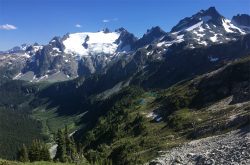
All plants and animals need suitable conditions to survive. That means a certain amount of light, a tolerable temperature range, and access to sources of food, water and shelter.
Many of the existing efforts to protect plant and animal species across the United States rely on information about where these species currently live. For example, if a rare bird species such as the snowy plover is found in a specific location along the Washington coast, conservationists try to protect it from human development where it lives.
But as climate change disrupts the status quo, most animals and plants will need to move to cooler or otherwise more suitable environments to survive. How does this affect efforts to protect biodiversity?
A new study by the University of Washington and The Evergreen State College analyzes whether accounting for climate change in conservation planning can protect future biodiversity more effectively than current approaches, and what the costs of implementing these solutions might be. The authors found that many species of animals and plants likely will need to migrate under climate change, and that conservation efforts will also need to shift to be effective. The paper published Jan. 27 in the journal Philosophical Transactions of the Royal Society B.
“We are going to need to protect different places if we want to protect biodiversity in the future,” said lead author Joshua Lawler, a UW professor in the School of Environmental and Forest Sciences. “We need to think about where species will go as the climate changes, and then plan for that. The business-as-usual planning process isn’t going to work.”
Read more at UW News »
